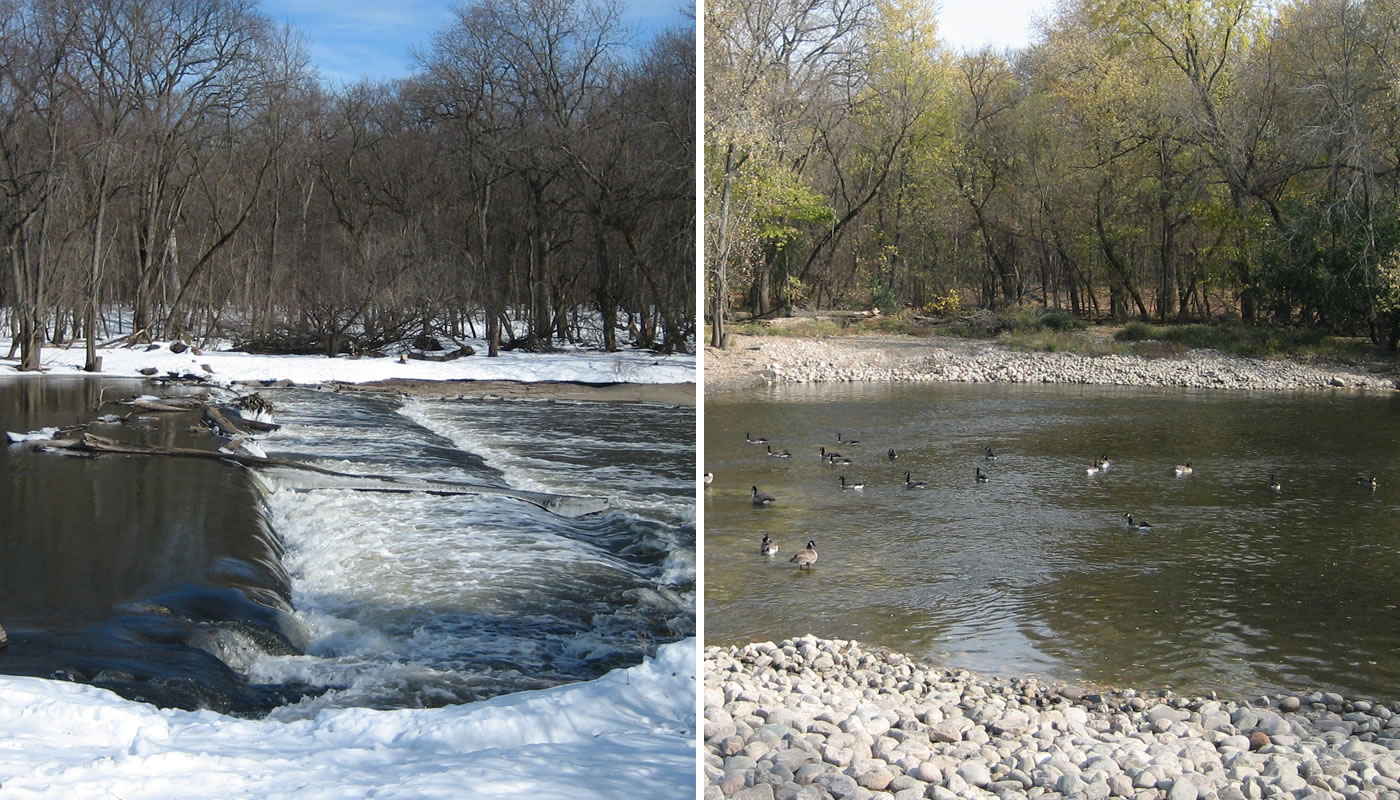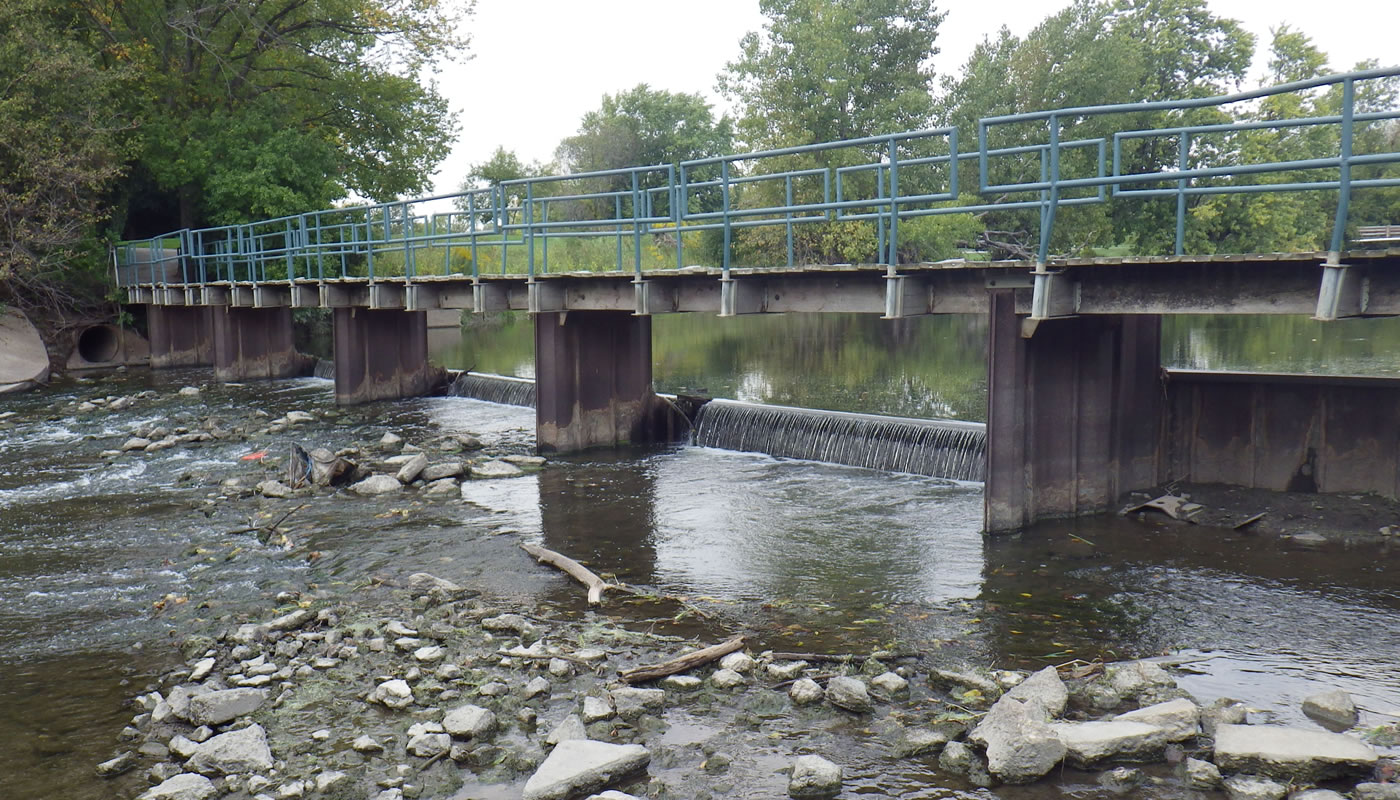The Forest Preserves is removing low-head dams on the Des Plaines River and North Branch of the Chicago River. These dams, built between 1918 and 1968, no longer serve their original purposes and prevent fish and humans from safely traveling the river.
On this page:
Overview
At one time, the Forest Preserves of Cook County owned seven low-head dams on the Des Plaines River and two low-head dams on the North Branch of the Chicago River. These dams were built between 1918 and 1968 for recreation, transportation, and sanitary waste purposes.
Today, with regional waste water treatment plants and roadway/highway bridges, these dams no longer serve their original purposes. In fact, these dams prevent the passage of riverine fishes, trap bedload material of sand and gravel, and are hazardous to canoeing and paddlers.
In addition, these dams cause a decline in habitat quality by altering normal river hydraulics and hydrology within the river channel and its adjacent floodplain, while deterring the natural recolonization of fish.
Dam Removal Process
The Forest Preserves has partnered with the Chicago District of the US Army Corps of Engineers (ACoE) and the Illinois Department of Natural Resources (IDNR) to remove or modify these dams.
To begin, ACoE, as part of their Planning Assistance to States Program, prepared two separate Integrated Planning Reports and Environmental Assessments—one for the Des Plaines River dams and one for the North Branch of the Chicago River dams—that present the conclusions and associated affects/effects for the removal of the low-head dams.
The reports summarizes the 1) study purpose and need, 2) most cost effective and feasible methods for removal of the dams, 3) affected environment, and 4) direct, indirect and cumulative effects. As part of this first phase, IDNR provided technical assistance for hydrologic and hydraulic modeling and sediment analysis.
Based on the ACoE reports, IDNR prepared the final engineering plans and specifications and permit applications for the removal of the dams. The IDNR may self-perform the removal of some dams and will contract with private construction companies for the removal of the remainder.
In the winter of 2011-2012, ACoE, in partnership with the IDNR and the Forest Preserves of Cook County, removed the first of our dams on the Des Plaines River.
A Free-Flowing Des Plaines River
Removing the dams on the Des Plaines River will complete the defragmentation of the upper Des Plaines River mainstem, allowing it to flow freely from its headwaters in Racine County, WI to the Brandon Road Lock & Dam in Joliet, IL.
The series of locks and dams on the lower Des Plaines and Illinois River are only a partial barrier to fishes, and over the long term do not prevent the intermingling of subpopulations above and below; however, these structures do cause impairment to riverine natural dynamics, instream hydraulics, instream habitat and floodplain habitats. The dam removals on the upper Des Plaines River would essentially connect the headwaters to the Mississippi River.

Dam Removal Status
| Dam | Removed |
|---|---|
| Ryerson Woods Dam (Lake County Forest Preserve District) | 2011 |
| Armitage Dam | 2012 |
| Fairbanks Dam | 2012 |
| Hofmann Dam (Village of Riverside) | 2012 |
| Dam #1 | 2014 |
| Dam #2 | 2014 |
| Dempster Avenue Dam | 2016 |
| Wright Woods Dam (Lake County Forest Preserve District) | 2016 |
| MacArthur Woods Dam (Lake County Forest Preserve District) | 2016 |
| Touhy Road Dam | 2021 |
| Dam # 4 | 2021 |
| Dam | Removed |
|---|---|
| Winnetka Road Dam | 2015 |
| Chick Evans Golf Course Dam | TBD |
| Tam O’Shanter Dam (Niles Park District) | 2024 |
Contact
John Watson
john.watson2@cookcountyil.gov

